Text

The annual "Wheels N' Reels" Film Festival is a yearly gathering of film buffs and car geeks from around the world, as they tour America and Europe celebrating the beauty of both cinema AND the automobiles that star in such films. For the 2000 festival, AMC commissioned Croc and Allie, two independent coachbuilders, to create this special bespoke mobile cinema for use at the festival. They gutted the interior of a small motorhome and hybridized it with a Chevrolet G-30 van to create this charming theater on wheels. It has since toured every year, showing short films from a variety of genres.
4 notes
·
View notes
Text
Dear Followers
@allhorsenoplinko here! You may have noticed that we haven't posted in a while. It's a long story, lotta stuff has happened and interests waned for a bit. DO NOT WORRY! We are working on making some new stuff to post! I'm working on making AI-generated Automation cars, and some other fun lore greeblies on the side.


(Two renders of the Phoenix Spectra, one of the cars I'm making for Automation)
@quadraticfour is working with different diffusion algorithms (or something, I don't know the AI stuff as much as I do know the car stuff) to make some really cool car things. We're gonna make some CONTENT for you!
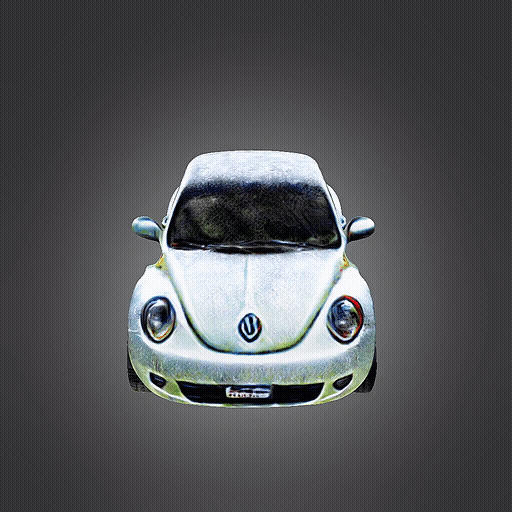
(A 2003 VW Beetle Ute, made by our own @quadraticfour, using Lumalabs.ai)
We are also still doing requests!
3 notes
·
View notes
Text
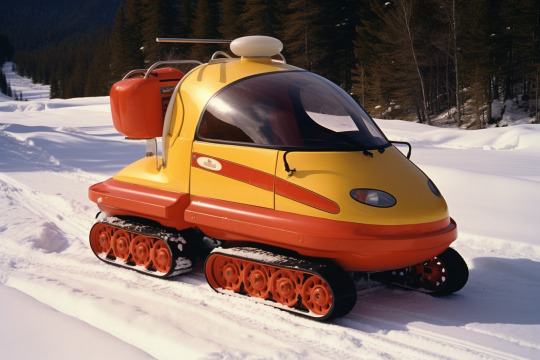
Sometime in the very late 90's, startup company R-Trek wanted to break into the snow transport market. Their first product was this: The R-Trek Bobble, an adorable 1-seater enclosed snowmobile with a four-track arrangement. It was designed with snow resort personnel and cargo transport in mind, since the four-track arrangement gave it more torque and grip. Despite the goofy design, it actually sold well in the Canadian and American market, managing to move over 30,000 units between 1997 and 2004.
10 notes
·
View notes
Text

To commemorate the 140th anniversary of Carl Benz' automobile, artist Klaus Gülrich created a rather odd sculpture dubbed "Pferd Und Wagen" featuring a heavily stylized rendition of a car with a small horse inside. It was meant to symbolize the progress made across the past 140 years, stemming from the humble horse carriage all the way to the modern automobile. Other interpretations include a commentary on how we measure engine output with a metric called "horsepower," or perhaps it could be a commentary on putting the "Horse" back in "Horseless Carriage." It is currently on display in the Museum of Modern Art in New York City.
8 notes
·
View notes
Text

Alongside the 2025 Ami, Citroen also released another vehicle into their lineup: a UTE dubbed the "OuiGo." Featuring an economical single-motor drivetrain, lane-assist technology, self-parking, and optional jump seats in the back, the OuiGo was praised for its sleek design and low price, but the lack of dual-motor drivetrain option somewhat hurt sales.
7 notes
·
View notes
Text
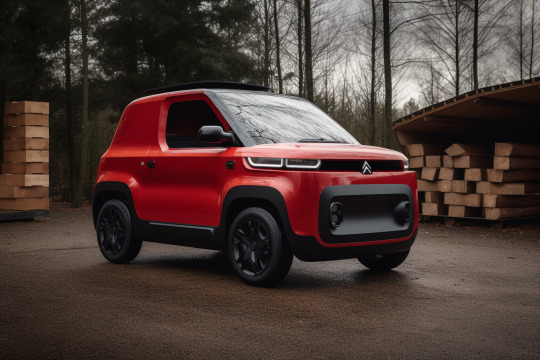
In 2025, Citroen decided to completely overhaul their very strange "Ami" pod car after receiving much feedback related to its rather...strange design. They went back to the drawing board and eventually settled on a sleek, modern design that was fresh and appealing (not to mention more aerodynamic!). It sold much better than the original Ami, thanks to the redesigned exterior, added cargo space in the rear, and improved powertrain.
7 notes
·
View notes
Text
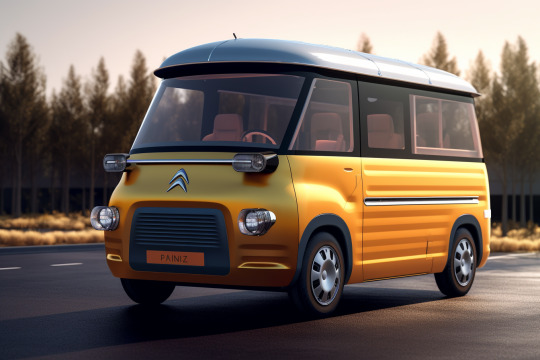
In 2010, Citroen decided it would bring back the H Van name with a revolutionary new all-electric powertrain, as well as some funky-fresh 2000's styling. The result? Something they called the "Citroen H-E series." It featured some stylings from the original, like the...uh...van shape? As well as the strakes and corrugations on the rear paneling. Aside from that, the van seemed pretty different from its namesake. It was received lukewarmly by the market, and was quietly discontinued in 2012, selling only 9,000 units.
5 notes
·
View notes
Text
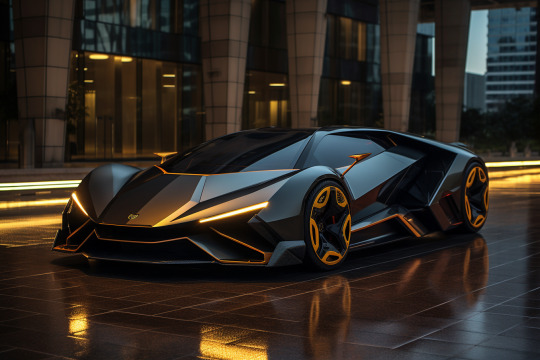
The 2023 Lamborghini Equus was a Gas-Turbine EV Hybrid sold with only 600 models produced. It was designed to be the worlds fastest production EV, with a top speed of 270 mph. It was made to celebrate the history of Lamborghini, and show a push towards new technologies, like the Gas Turbines that Chrysler had been pioneering for the past 50 years, combined with electric motors. The car has a 0-60 time of 0.87 seconds in "Assurdo" Mode, translating to "Absurd" in English.
14 notes
·
View notes
Text
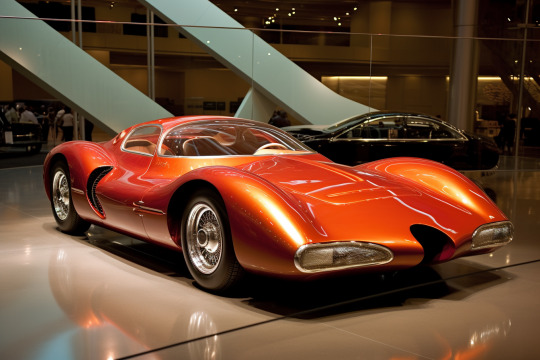
The 1966 Chrysler-Ghia Turbina, shown on display in the MotorWorld-Heritage museum, in Geneva, Switzerland, is an one-off concept car built after the success of the Chrysler Turbine Car in 1963. It was built to be as exotic as possible, showing off to Europe the future of automobile power. Using the same A-831 Gas Turbine as the Turbine Car, it would be driven and tested at a few race tracks, given a new, Chrysler-Built 4 speed automatic transmission, rather than the Torqueflite of it's predecessor. Two cars were planned, but the second car, body complete, without engine or suspension, was lost in transit from Turin to Detroit in a dockyard fire. T-1 was first paraded at the 1965 Motorworld Show in Bonn, West Germany to critical applause and intrigue, showing off the power of Chrysler's advanced turbine engine, beginning Chrysler's evolution from a traditional manufacturer, to one who produced more advanced, more expensive products in the mid-to-late 20th century, shifting their dynamic to produce things like a production Turbine car in 1971.
12 notes
·
View notes
Text

The 1999 Buick Wildcat Hybrid was a concept car built for the 1999 MotorWorld show. It was a functioning prototype 2 seater concept, inspired by the Art Deco resurgence of the late 1990's in America, powered by a pair of jet-turbine engines to charge the quad motor electric engines which allowed the car to have a range of 600+ miles on just 10 gallons of Gasoline, Alchohol, or any other combustible fluid. A total of 3 prototypes were built, with one on display in GM's Heritage center, being the one shown at Motorworld, another on display in the Smithsonian as the only fully functional prototype, and the third being owned by Jay Leno, as an initially unpowered prototype, eventually given an LS3 engine by Jay Leno's mechanics, allowing the prototype to be driven around to car shows.
13 notes
·
View notes
Text

This is a 1981 Kenneth Motor Home Conversions Company (KMHCC, for short) Minihome, based off of the VW Bus Westfalia. It’s a complete conversion of the German van, turning it into a home on four wheels, with a completely new body, an extendable side deck (not shown), and a (semi) private bathroom, all in one. It cost 4 times the MSRP of a Westfalia, without the purchase cost of the van for conversion included. Between 3000 and 3500 were produced, with about 800 still known to exist. Produced from 1980-1991, with the discontinuation of the Westfalia (in North America) in 1991. The tooling was sold to a Brazilian company, and the cars were built in Brazil from 1993-2013 when the Westfalia was finally discontinued in Brazil, with Brazilian production totaling to over 8900 models built. One incredible thing to note is that this was the type of van used by NASA to transport astronauts to the shuttle, which is what the color scheme and background allude to. NASA had owned and operated three of these vans until 2019, where they were replaced with all-new Kenneth Ultravans, made by the same company. NASA still keeps one original on reserve at the KSC, while the other two reside in the Petersen Auto Museum and at Houston's Johnson Space Center respectively.
#Kenneth Motohomes#Fictional Company#ai generated images#human written context#NASA#Astrovan#unreality#unfiction
4 notes
·
View notes
Text
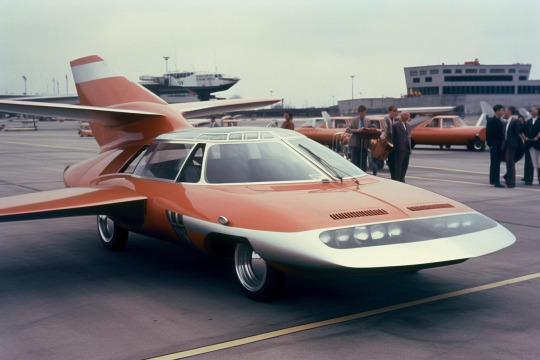
The 1969 Citroen Voler was a concept flying car designed to bring the power of affordable personal flight to the masses. The photo you see here is a test flight conducted at the Paris-Orly airport, where it was discovered that the car's flat front design functioned as an airfoil, of all things. Unfortunately, this caused the car to be uncontrollable both in the air, and on the ground at high speeds. Because of these design flaws, the car was scrapped and the idea put back onto the shelf indefinitely.
3 notes
·
View notes
Text
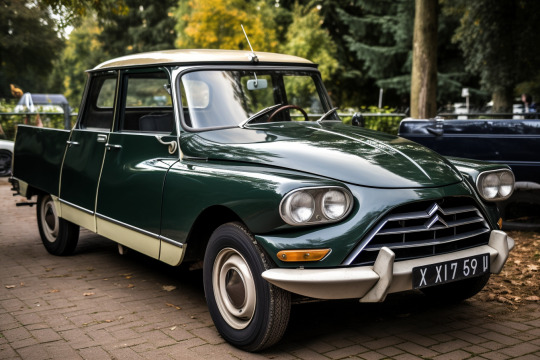
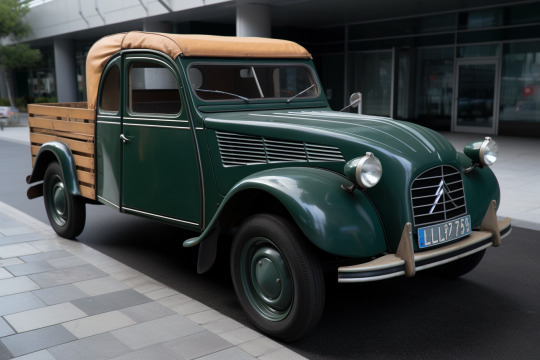
We here at AiAutos would like to formally apologize for the anomalous posts from yesterday. It appears that a colleague of ours who shall remain unnamed (*cough cough it was Jerry) set the Wave-O-Matic to record from our universe instead of alternate universes, resulting in a not-at-all hilarious and gag-worthy mixup. Rest assured, the issue has been dealt with and should not happen again, at least not for another year we hope.
We've also got some lovely pickup truck-like vehicles here, based off of the Citroen DS and 2CV respectively. Normally, we would provide the backstory behind these vehicles. However, since the Wave-O-Matic is still being...ahem...recalibrated, we don't have that information for you at this time.
#Citroen#ai generated images#human written context#unreality#unfiction#april fools is over#see you next year
30 notes
·
View notes
Text

"Wait a minute...what's going on here? Why is the Wave-O-Matic set to record from our...JERRY!!! DID YOU TOUCH THE WAVE-O-MATIC??? I swear to fucking God, Jerry if you tampered with the...no, I know it was you, I have CCTV footage right here that shows you were in the lab at that...no, it wasn't "your evil twin Gary," you and I know that's a fucking load of bullshit. Jerry, I don't know what we're going to do with you. At this rate we might as well just fire you, though I'm not sure we can do that because we're kind of understaffed at the moment." Sigh...
5 notes
·
View notes
Text
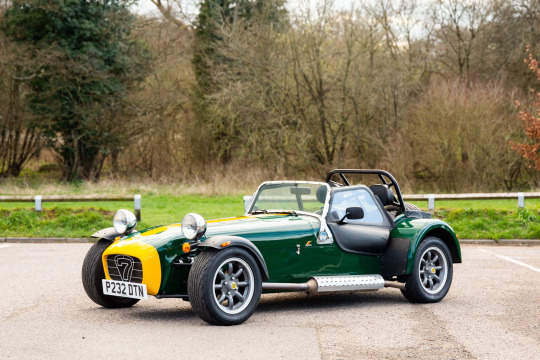
The Caterham 7 is a lightweight sports car that has been in production since 1957. Originally, the car was known as the Lotus Seven and was designed by Colin Chapman, the founder of Lotus Cars.
The Lotus Seven was designed to be a minimalist sports car that focused on performance and handling rather than luxury or comfort. The car's design was so successful that it remained in production until 1973. In 1973, Lotus sold the rights to the design to Caterham Cars, a British car manufacturer.
Caterham Cars continued to produce the car, renaming it the Caterham 7. Over the years, the car has undergone numerous updates and improvements. The car's design has remained largely the same, but improvements in technology and materials have made the car lighter, faster, and more reliable.
The Caterham 7 has become a cult classic among car enthusiasts. The car's minimalist design, nimble handling, and raw performance have made it a favorite among track day enthusiasts and amateur racers. In recent years, the car has also gained a reputation for being a popular choice for kit car builders.
Today, the Caterham 7 is still in production and remains one of the most iconic sports cars on the market. Despite its minimalist design, the car continues to impress drivers with its exceptional handling and exhilarating performance.
#Caterham#human generated images#ai written context#reality#nonfiction#wait a minute...what's this footage?
2 notes
·
View notes
Text
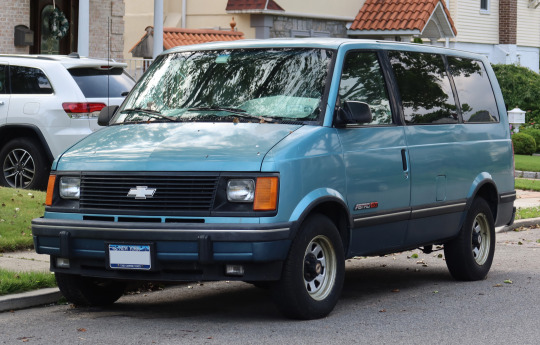
The Chevrolet Astro Van was a popular minivan produced by General Motors from 1985 to 2005. Designed to compete with the Chrysler Voyager and Dodge Caravan, the Astro Van was marketed as a versatile and reliable family vehicle with ample cargo space.
The Astro Van was built on a truck platform, which gave it a durable and sturdy frame. Its boxy exterior design was reminiscent of the popular American vans of the 1970s, such as the Ford Econoline and Dodge Tradesman. However, its interior was designed to be more comfortable and convenient for families, with features such as bucket seats, air conditioning, and power windows.
Over the years, the Chevy Astro Van underwent several updates and revisions. In 1990, it received a facelift that included a new front grille and updated headlights. In 1995, it was given a more powerful engine option and a redesigned dashboard with a more modern look.
Despite its popularity, the Astro Van was eventually phased out in 2005 due to declining sales and changes in consumer preferences towards more fuel-efficient vehicles. However, it left a lasting legacy as a reliable and versatile vehicle that served as a trusted family companion for many years. It also spawned a sibling model, the GMC Safari, which was sold alongside the Astro Van for much of its production run.
Today, the Chevy Astro Van remains a beloved classic among car enthusiasts and collectors. Its unique blend of truck-like durability and family-friendly features make it a nostalgic symbol of a bygone era in American automotive history.
3 notes
·
View notes
Text
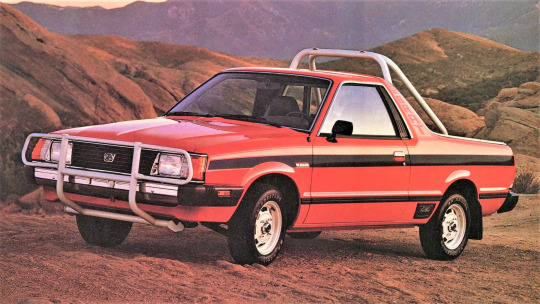
The Subaru Brat, also known as the Subaru 284 in some markets, was a compact pickup truck produced by Subaru from 1978 to 1994. The Brat was first introduced to the US market in 1978 and quickly became known for its unique design and rugged off-road capabilities.
One of the most distinctive features of the Brat was its two rear-facing jump seats, which were located in the truck bed. These seats were marketed as a way for owners to transport additional passengers, but they also helped the Brat skirt around strict US import laws that required trucks to have a certain payload capacity.
Throughout its production run, the Brat received several updates and improvements. In 1981, Subaru introduced a four-wheel-drive version of the Brat, which made it even more capable off-road. The Brat was also available with a turbocharged engine option in later years.
Despite its popularity, the Brat was eventually discontinued in 1994 due to changing safety regulations and the introduction of newer, more modern trucks. However, its unique design and rugged reputation have made it a cult classic among off-road enthusiasts.
Today, the Brat remains a beloved part of Subaru's history and continues to inspire car enthusiasts around the world. Whether you're a fan of its distinctive design or its rugged off-road capabilities, the Brat is a true icon of the automotive world.
#Subaru#human generated images#ai written context#reality#nonfiction#ok this might be getting old fast
16 notes
·
View notes